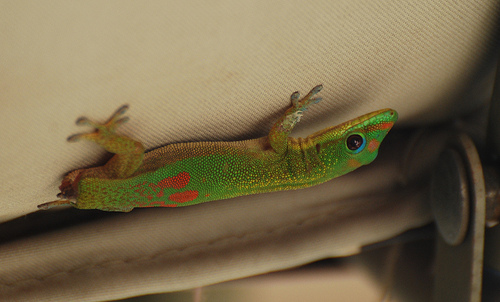Podcast: Play in new window
BOB HIRSHON (host):
Detachable lizard tails. I’m Bob Hirshon and this is Science Update.
When a predator grabs a gecko by its tail, the small lizard can escape by shedding the appendage. Now, scientists have discovered that the tail easily detaches along a pre-scored line where it meets the body. High-resolution imaging has revealed that the tail is attached with adhesive microstructures that rip off cleanly. But according to Aarhus University chemist Kristian Sangaard, this occurs only under the most dire of circumstances.
KRISTIAN SANGAARD (Aarhus University):
The tail is a very important organ. It’s important for the social status of the lizard. So it’s really only when it’s a matter of life and death that they’re willing to self-amputate their tail.
HIRSHON:
He says contrary to expectations, no biochemical process is involved. The findings, which appear in the journal PloS One, could help inspire the design of zipper-like structures that come apart quickly. I’m Bob Hirshon, for AAAS, the science society.
- This gecko has lost its tail, probably due to a predator. (Once And Future Laura/Flickr)

